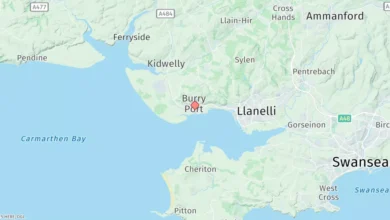Christmas Jumper Ideas: Fun, Funny & Festive Styles for 2025

The Christmas jumper has become one of the most recognisable symbols of the festive season. Once considered unfashionable or overly kitsch, it has evolved into a beloved holiday tradition worn by people of all ages. From cosy family gatherings to office parties and charity events, the Christmas jumper represents warmth, fun, and a shared sense of celebration. Its colourful patterns, playful motifs, and unmistakable festive spirit make it more than just a piece of clothing — it’s a seasonal statement.
In recent decades, the popularity of the Christmas’jumper has grown rapidly, particularly in the UK and Europe, before spreading worldwide. What started as a humorous novelty item is now a staple of December wardrobes, with entire events dedicated to wearing them. This article explores the complete story of the Christmas jumper, including its history, different styles, current trends, and practical advice on how to choose, style, and care for one. Whether you prefer subtle festive knits or bold novelty designs, this guide covers everything you need to know.
What Is a Christmas Jumper?
A Christmas jumper is a knitted sweater designed specifically for the festive season, typically featuring holiday-themed colours, patterns, and images. Common designs include reindeer, snowflakes, Christmas trees, Santa Claus, elves, and festive slogans. Traditional colours such as red, green, white, and gold dominate, although modern designs often incorporate brighter tones, metallic threads, or LED lights for added flair.
What distinguishes a Christmas’jumper from a standard winter sweater is its intentional celebration of Christmas themes. While regular jumpers focus on warmth and style, Christmas’jumpers prioritise festive expression and fun. They are often worn during December, particularly in the lead-up to Christmas Day, and are embraced for their playful and sometimes deliberately “over-the-top” appearance. This willingness to embrace novelty is part of their charm and appeal.
History of the Christmas Jumper
The origins of the Christmas jumper can be traced back to traditional winter knitwear worn in colder climates. Early festive sweaters were practical garments decorated with winter motifs rather than explicitly Christmas-related imagery. During the mid-20th century, these designs began to incorporate more recognisable holiday symbols, particularly in Europe and North America.
The Christmas jumper gained mainstream popularity in the 1980s and 1990s, partly due to its appearance in films, television shows, and pop culture. Characters wearing bold, festive knitwear helped turn the jumper into a humorous and memorable fashion choice. In the UK, the concept of “Christmas’Jumper Day” further cemented its place in modern culture, transforming it into a symbol of charity, community, and festive fun. Today, Christmas’jumpers are worn proudly, celebrated for their individuality and seasonal charm.
Popular Types of Christmas Jumpers
Christmas jumpers come in a wide variety of styles to suit different personalities and occasions. Classic designs focus on traditional patterns such as Fair Isle knitting, subtle snowflakes, and tasteful festive imagery. These jumpers are ideal for those who enjoy a more understated holiday look while still embracing the Christmas spirit.
On the other end of the spectrum are novelty and “ugly” Christmas jumpers, which are intentionally bold, humorous, and exaggerated. These often feature loud colours, oversized decorations, jokes, or even three-dimensional elements. Luxury Christmas’jumpers have also gained popularity, offering high-quality materials, elegant designs, and premium finishes for those seeking a more refined festive outfit. Matching family, couple, and pet jumpers have become another trend, emphasising togetherness and making Christmas jumpers a shared experience rather than an individual choice.
Christmas Jumper Trends
Modern Christmas jumper trends reflect broader fashion movements, including sustainability and personal expression. Eco-friendly jumpers made from recycled or organic materials are increasingly popular, appealing to environmentally conscious consumers. Brands now focus on ethical production alongside festive design, making it easier to celebrate responsibly.
Technological and interactive elements are also trending. Light-up jumpers, musical designs, and textured fabrics add novelty and entertainment value. At the same time, minimalist Christmas’jumpers with subtle embroidery and neutral tones cater to those who prefer a more sophisticated look. These contrasting trends show how the Christmas jumper has diversified, offering something for every taste while maintaining its festive identity.
How to Style a Christmas Jumper

Styling a Christmas jumper depends largely on the occasion. For casual settings, pairing it with jeans, leggings, or trainers creates a relaxed and comfortable look suitable for shopping trips or family gatherings. Layering with a coat or scarf adds warmth without hiding the festive design.
In office or semi-formal environments, Christmas’jumpers can still work when styled thoughtfully. Choosing a jumper with a simpler design and pairing it with tailored trousers, skirts, or smart shoes creates a balance between festive and professional. For parties and events, bold jumpers can be styled with statement accessories, boots, or festive makeup, turning the outfit into a conversation starter while embracing the celebratory mood.
Choosing the Right Christmas Jumper
Selecting the right Christmas jumper involves considering comfort, fit, and personal style. Fabric choice is crucial, as wool and cotton blends offer warmth and breathability, while synthetic materials may provide stretch or added durability. A well-fitting jumper ensures comfort throughout the day and avoids an overly bulky appearance.
Budget also plays a role. Affordable jumpers are widely available and perfect for occasional wear, while premium options may offer better craftsmanship and longevity. When shopping online, checking size guides and reviews helps avoid disappointment. Ultimately, the best Christmas’jumper is one that feels comfortable, reflects your personality, and makes you feel festive and confident.
Caring for and Storing Christmas Jumpers
Proper care ensures that a Christmas jumper lasts beyond a single season. Always check the care label before washing, as many jumpers require gentle cycles or hand washing to prevent shrinkage or damage. Turning the jumper inside out before washing helps preserve colours and designs.
After the festive season, storing Christmas’jumpers correctly is essential. Clean them thoroughly before storage and keep them in a cool, dry place. Folding rather than hanging prevents stretching, and adding lavender or cedar helps protect against moths. With proper care, a Christmas’jumper can become a cherished part of your holiday wardrobe year after year.
Conclusion
The Christmas jumper has transformed from a novelty garment into a festive fashion icon. Its rich history, wide range of styles, and ability to bring people together make it a unique and enduring tradition. Whether worn for charity events, family celebrations, or personal enjoyment, the Christmas’jumper embodies the joy and warmth of the holiday season.
By understanding its origins, trends, and styling options, you can choose a Christmas’jumper that suits your personality and occasion. More than just clothing, it’s a celebration of creativity, comfort, and festive spirit — a tradition worth embracing every December.
Frequently Asked Questions (FAQs)
What is a Christmas jumper?
A Christmas’jumper is a festive sweater featuring holiday-themed designs and colours.
When should you wear a Christmas jumper?
They are typically worn throughout December, especially during festive events and celebrations.
Are Christmas jumpers appropriate for work?
Yes, especially on designated Christmas jumper days or when styled appropriately.
What makes an ugly Christmas jumper?
Bold colours, exaggerated designs, and humorous elements define ugly Christmas jumpers.
How do I choose the right size?
Refer to size guides and consider whether you prefer a fitted or relaxed look.
Can Christmas jumpers be worn after Christmas?
They are usually seasonal but can be worn anytime for fun or themed events.
How should Christmas jumpers be washed?
Follow the care label, usually using gentle cycles or hand washing.
Where can I buy good-quality Christmas jumpers?
They are available from high-street retailers, online stores, and specialist festive shops.
You May Also Read: Cinder Toffee



